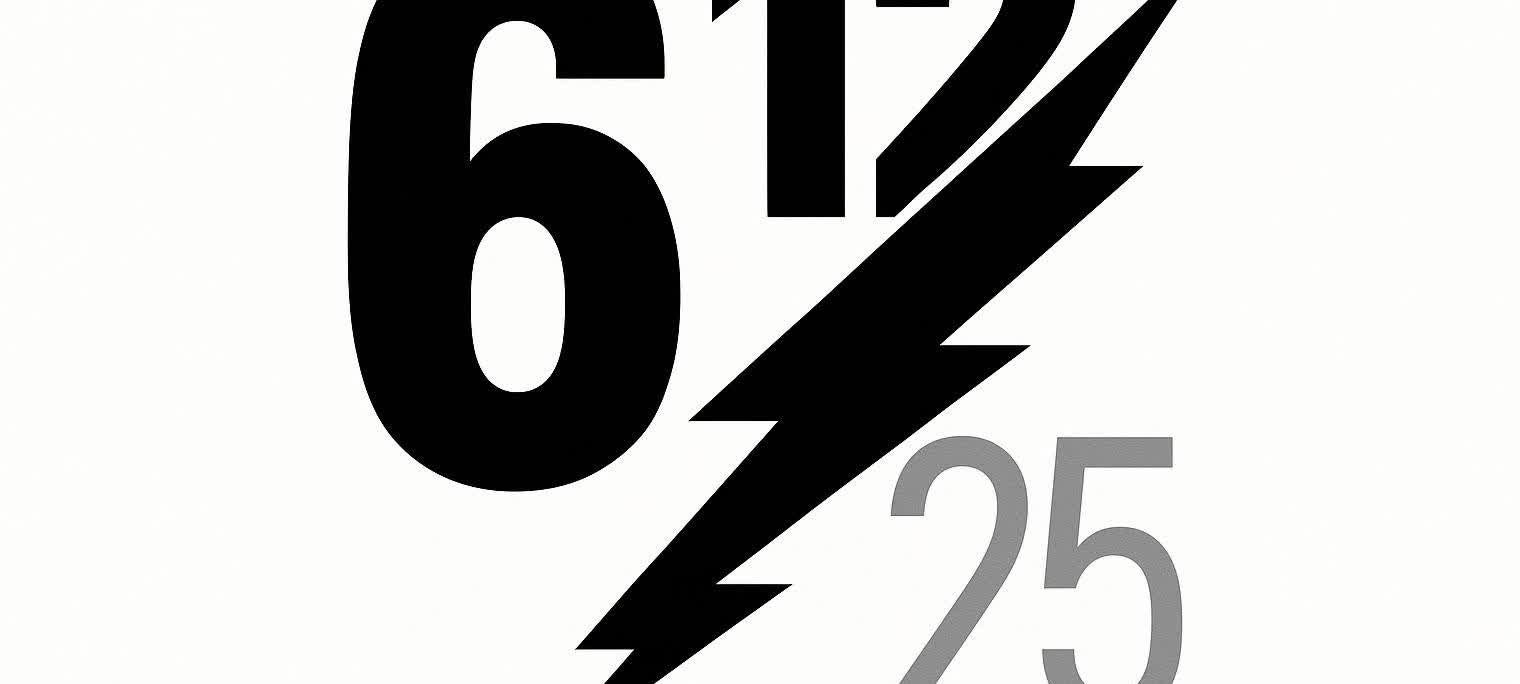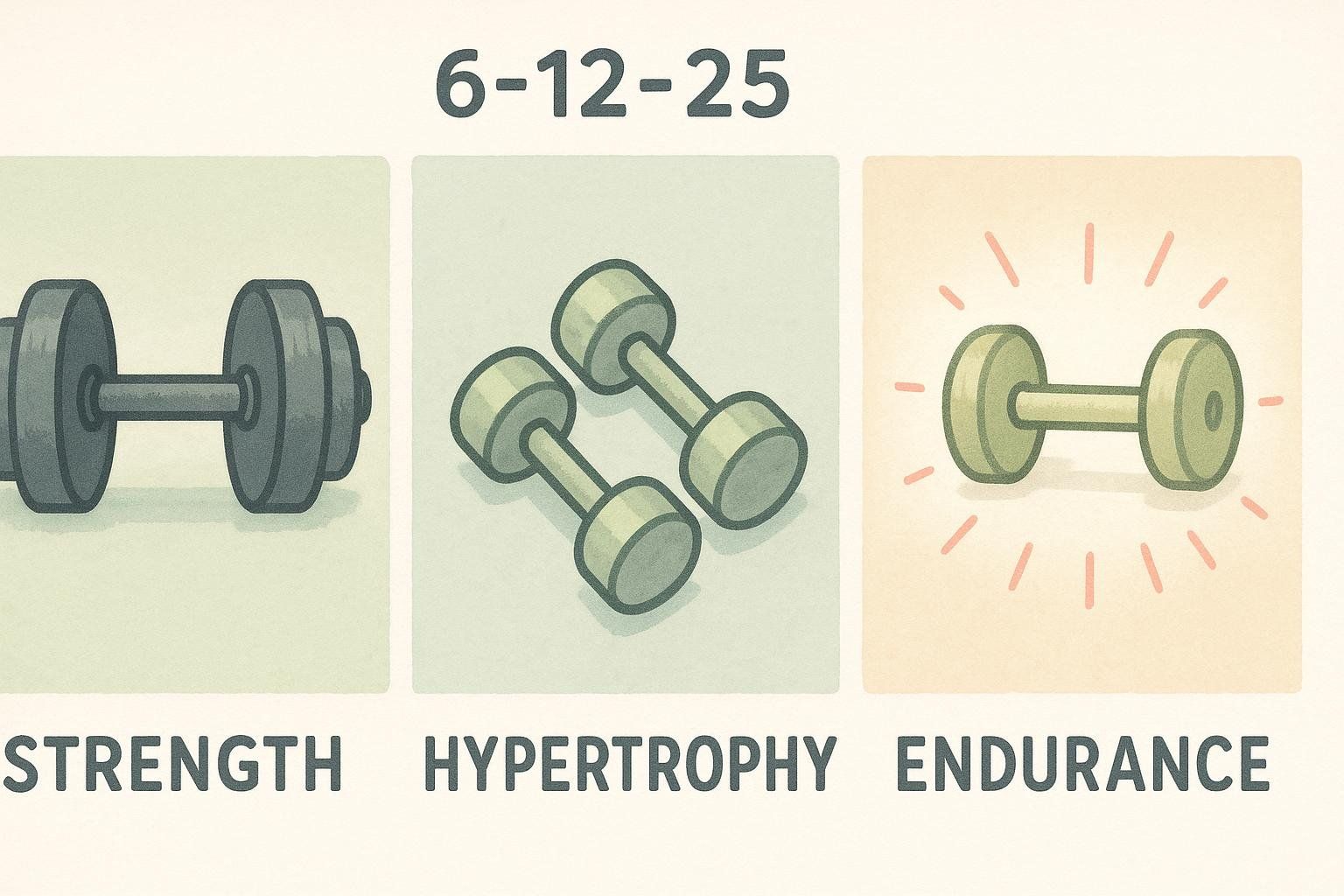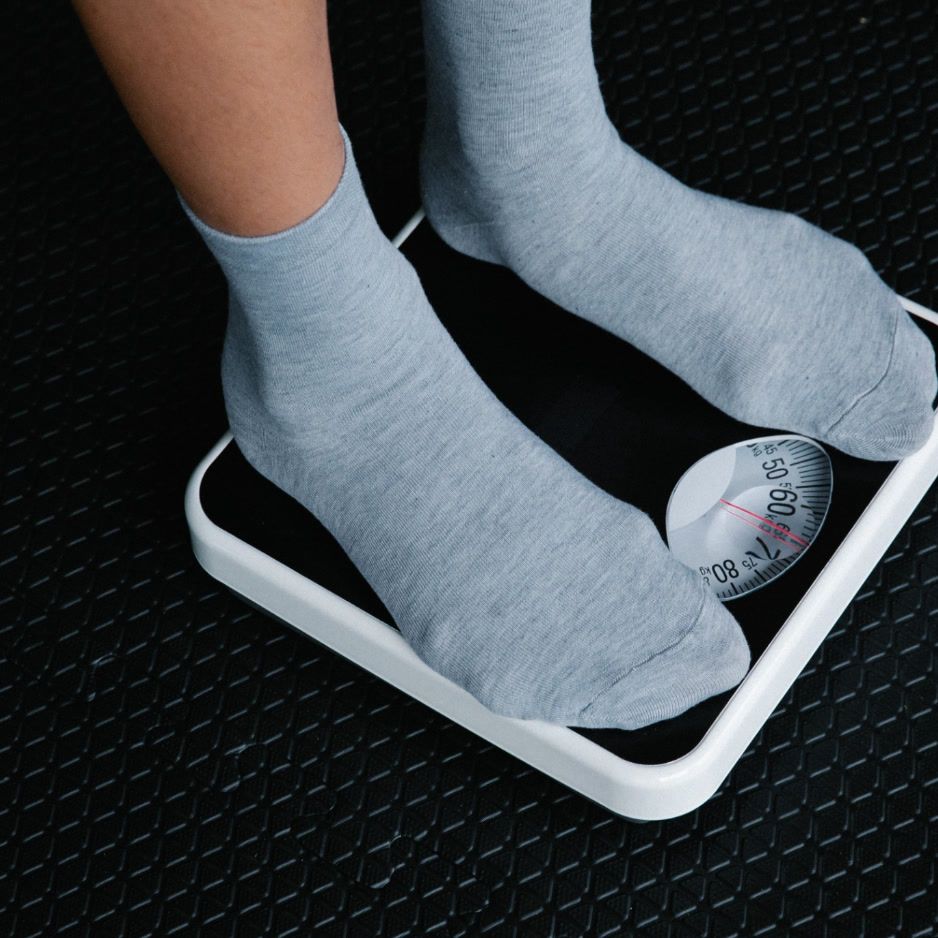The 6-12-25 Workout Protocol: Guide to Building Muscle and Breaking Plateaus

The 6-12-25 Workout Protocol: Your Complete Guide to Smashing Plateaus and Building Muscle
Tired of workouts that feel like going through the motions? The 6-12-25 workout protocol might just be the plateau-busting, muscle-building shock your routine needs.
Created by legendary strength coach Charles Poliquin, this intense training method combines three different rep ranges into one brutal giant set that targets strength, hypertrophy, and muscular endurance simultaneously. It's like hitting the gym equivalent of a workout trifecta—and athletes and lifters have been using it to break through plateaus and accelerate muscle growth.
The numbers aren't random: 6 reps for pure strength, 12 reps for optimal muscle growth, and 25 reps to flood your muscles with metabolic stress. When performed back-to-back with minimal rest, this protocol creates a unique training stimulus that forces your body to adapt in ways traditional straight-set programs simply can't match.
What Is the 6-12-25 Workout Protocol?
The 6-12-25 workout protocol is a high-intensity training method that involves performing three different exercises for the same muscle group consecutively, using rep ranges of 6, 12, and 25 repetitions respectively. Developed by strength coach Charles Poliquin, this giant set approach targets all three primary mechanisms of muscle growth: mechanical tension, metabolic stress, and muscle damage.
Here's how it works:
- Exercise 1: Heavy compound movement for 6 reps (strength focus)
- Exercise 2: Moderate weight compound or isolation exercise for 12 reps (hypertrophy focus)
- Exercise 3: Light weight isolation movement for 25 reps (endurance/pump focus)
- Rest: 10-15 seconds between exercises, 2-3 minutes after the complete giant set
This structure creates what Men's Health describes as a "tri-set training protocol" that maximizes muscle fiber recruitment and metabolic stress while condensing significant training volume into a short timeframe.

The Science Behind the 6-12-25 Method
The genius of the 6-12-25 protocol lies in how it systematically targets the three primary mechanisms of muscle hypertrophy identified in exercise science research:
1. Mechanical Tension (6 Reps)
The heavy 6-rep set creates maximum mechanical tension through the muscle fibers. This high load stimulates the recruitment of type II (fast-twitch) muscle fibers and triggers the molecular signaling pathways responsible for muscle protein synthesis. A 2010 study on muscle building mechanisms shows that mechanical tension is a primary driver of muscle growth, making this the strength-building foundation of the protocol.
2. Muscle Damage and Volume (12 Reps)
The moderate-weight 12-rep set hits the sweet spot for muscle growth. This rep range optimizes the balance between load and volume, creating significant muscle damage and protein synthesis while maintaining adequate training intensity. Research on body recomposition suggests that the 8-15 rep range is optimal for maximizing hypertrophic adaptations.

3. Metabolic Stress (25 Reps)
The high-rep 25-rep finisher floods the muscle with lactate and other metabolites, creating massive metabolic stress. This "muscle pump" effect restricts blood flow, leading to cellular swelling and the release of growth-promoting hormones. As training specialists at Bandana Training explain, metabolic stress can stimulate muscle growth through different pathways than mechanical tension alone.
Sample 6-12-25 Workouts for Every Muscle Group
Chest Workout
Exercise 1 (6 reps): Barbell Bench Press
- Load: Choose a weight that allows you to complete 6 reps with 1-2 reps left in reserve (RPE 8-9)
- Focus: Control the descent, explosive push-up
- Rest: 10 seconds
Exercise 2 (12 reps): Incline Dumbbell Press
- Load: Select a weight you can lift for 12 reps with 1-2 reps remaining in the tank (RPE 8-9)
- Focus: Full range of motion, squeeze at the top
- Rest: 10 seconds
Exercise 3 (25 reps): Cable Flyes or Push-ups
- Load: Use a weight that challenges you for 25 reps but allows completion with proper form (RPE 7-8)
- Focus: Constant tension, mind-muscle connection
- Rest: 2-3 minutes before next round
Back Workout

Exercise 1 (6 reps): Weighted Pull-ups or Lat Pulldowns
- Load: Weight that allows 6 reps with 1-2 reps left in reserve (RPE 8-9)
- Focus: Full range of motion, controlled lowering
Exercise 2 (12 reps): Bent-over Barbell Rows
- Load: Weight for 12 reps with 1-2 reps remaining (RPE 8-9)
- Focus: Squeeze shoulder blades together, pull to lower ribs
Exercise 3 (25 reps): Face Pulls or Straight-Arm Pulldowns
- Load: Light weight that challenges you for all 25 reps with good form (RPE 7-8)
- Focus: High rep precision, constant tension on the target muscles
Leg Workout

Exercise 1 (6 reps): Back Squats or Front Squats
- Load: Weight for 6 reps with 1-2 reps in reserve (RPE 8-9)
- Focus: Controlled descent, explosive drive through heels
Exercise 2 (12 reps): Bulgarian Split Squats
- Load: Weight for 12 reps per leg with 1-2 reps remaining (RPE 8-9)
- Focus: Deep range of motion, maintain balance
- Execution: Complete all 12 reps on one leg, then immediately switch to the other. Take your 10-second rest only after completing both sides.
Exercise 3 (25 reps): Leg Extensions or Leg Curls
- Load: Light weight for challenging but completable 25 reps (RPE 7-8)
- Focus: Constant tension, full muscle contraction
Shoulder Workout

Exercise 1 (6 reps): Overhead Press (barbell or dumbbell)
- Load: Weight for 6 reps with 1-2 reps left in reserve (RPE 8-9)
- Focus: Strict form, press overhead not forward
Exercise 2 (12 reps): Lateral Raises
- Load: Weight for 12 reps with 1-2 reps remaining (RPE 8-9)
- Focus: Control the weight, slight pause at the top
Exercise 3 (25 reps): Cable Lateral Raises or Plate Front Raises
- Load: Light weight for challenging but completable 25 reps (RPE 7-8)
- Focus: Keep tension on delts, avoid momentum
How to Program the 6-12-25 Method
Weekly Split Options (2-3 Sessions Maximum)
Option 1: Alternating Focus (3x/week)
- Monday: Chest 6-12-25 protocol (3-4 rounds)
- Wednesday: Back 6-12-25 protocol (3-4 rounds)
- Friday: Legs 6-12-25 protocol (3-4 rounds)
Option 2: Upper/Lower Approach (2x/week)
- Monday: Upper Body - Chest 6-12-25 protocol (3-4 rounds) + 1-2 accessory exercises for back and shoulders
- Thursday: Lower Body - Legs 6-12-25 protocol (3-4 rounds) + 1-2 accessory exercises for glutes and calves
Option 3: Full Body Integration (3x/week)
- Monday/Wednesday/Friday: Select one primary muscle group for the full 6-12-25 protocol (3 rounds), then perform 1-2 standard sets for other muscle groups
Benefits of the 6-12-25 Protocol
Time Efficiency
GQ reports that the 6-12-25 method condenses significant training volume into a short period. A complete workout can be finished in 30-45 minutes while delivering the stimulus equivalent to much longer traditional sessions.
Plateau Busting

The varied rep ranges and high intensity create a novel stimulus that forces adaptation. Redefining Strength coaches report that this method is particularly effective for breaking through training plateaus when conventional programs stop producing results.
Enhanced Work Capacity
The minimal rest periods between exercises improve cardiovascular conditioning and muscular endurance while building muscle. This creates a unique conditioning effect that traditional strength training often lacks.
Massive Muscle Pump
The high-rep finisher creates an impressive muscle pump that many lifters find highly motivating. This acute muscle swelling may contribute to long-term hypertrophy through cellular mechanisms beyond mechanical tension alone.
Who Should Use the 6-12-25 Method?
Ideal Candidates
- Intermediate to advanced lifters who have mastered basic movement patterns
- Time-pressed individuals seeking maximum results per minute spent training
- Plateaued lifters looking for a new stimulus to restart progress
- Athletes during hypertrophy or off-season phases
Who Should Avoid It
- Complete beginners who need to focus on movement quality over intensity
- Those recovering from injury due to the high demands and fatigue
- During peak strength phases when maximum loads are the priority
Common Mistakes and How to Avoid Them
Mistake 1: Using Too Much Weight
GQ warns that the most common error is loading too heavily on the initial exercise. Remember, you need to complete 37 total reps with minimal rest. Start conservative and build up.
Fix: Use RPE 8-9 for the first exercise, not your true maximum. You should have 1-2 reps left in the tank.
Mistake 2: Resting Too Long Between Exercises
The magic happens when you maintain continuous tension and metabolic stress. Taking long breaks defeats the purpose.
Fix: Stick to 10-15 seconds between exercises. Set up all equipment beforehand.
Mistake 3: Poor Exercise Selection
Choosing exercises that don't complement each other or require extensive setup changes kills momentum.
Fix: Select exercises that flow smoothly together and target the same muscle group from different angles.
Mistake 4: Ignoring Form for Reps
The fatigue from earlier exercises can compromise technique on the high-rep finisher.
Fix: Reduce weight as needed to maintain perfect form throughout all 25 reps.
Tracking Your 6-12-25 Progress
Beyond the Scale: Why Body Composition Matters

Traditional metrics like scale weight or 1-rep max don't capture the unique adaptations from 6-12-25 training. This protocol creates significant changes in muscle quality, endurance, and body composition that require more sophisticated tracking methods.
DEXA Scanning for 6-12-25 Results
DEXA scans provide the most accurate way to track the muscle-building and fat-loss effects of high-intensity protocols like 6-12-25. Unlike basic body composition methods, DEXA can detect:
- Lean mass gains in specific muscle regions
- Fat mass changes separate from muscle growth
- Bone density improvements from the strength component
- Visceral fat reduction from the metabolic demands
To objectively measure your transformation, you can get baseline and follow-up scans at a BodySpec location to track your 6-12-25 results.
Performance Metrics to Track
- Load progression on the 6-rep exercise
- Rep quality maintenance through the 25-rep finisher
- Rest period compliance between exercises
- Workout completion time for entire sessions
- Muscle circumference measurements weekly
Sample 4-Week Program (Alternating Focus)

This sample program uses the Alternating Focus approach, targeting one muscle group with the 6-12-25 protocol per session while staying within the recommended 2-3 sessions per week.
Week 1-2: Foundation Phase
- Monday: Chest 6-12-25 protocol (3 rounds)
- Wednesday: Back 6-12-25 protocol (3 rounds)
- Friday: Legs 6-12-25 protocol (3 rounds)
- 2-3 minutes rest between giant sets
- Focus on establishing proper weights and form
Week 3-4: Intensification Phase
- Same structure as above, but:
- Increase to 4 rounds per muscle group
- First, focus on completing the extra round with your current weights. Once you can do that with good form, begin to increase the load by 2.5-5%
- 2-3 minutes rest between giant sets (maintain recovery for quality reps)
Deload and Reassess
After 4 weeks, take a deload week with 20% lighter weights, then reassess with progress photos, measurements, and ideally a DEXA scan to track your muscle-building and fat-loss results.
Frequently Asked Questions
How often should I do 6-12-25 workouts?
Training experts at Bandana Training recommend using this method 2-3 times per week maximum due to its high intensity. It works best as a plateau-busting phase lasting 4-8 weeks rather than a year-round approach.
Can beginners use the 6-12-25 method?
While beginners can use modified versions, GQ suggests having at least 6-12 months of consistent training experience before attempting this intense protocol. Master basic movement patterns first.
Is the 6-12-25 method better than traditional sets?
Neither method is inherently "better"—they serve different purposes. 6-12-25 excels for time efficiency, plateau breaking, and conditioning, while traditional straight sets allow for heavier loads and better strength development.
How do I know if I'm using the right weights?
Follow the RPE guidance provided: aim for RPE 8-9 on the 6 and 12-rep exercises (1-2 reps left in reserve) and RPE 7-8 on the 25-rep finisher (challenging but completable with good form).
Can I do cardio with 6-12-25 training?
The protocol itself provides significant cardiovascular benefits. Additional cardio should be limited to light walking or easy cycling to avoid interfering with recovery.
Ready to Break Your Plateau?
The 6-12-25 workout protocol isn't just another training fad—it's a scientifically-backed method for shocking your muscles into new growth while building incredible work capacity. Whether you're a frustrated plateau-sufferer or a time-crunched professional seeking maximum efficiency, this protocol delivers results that traditional training often can't match.
Start with conservative weights, focus on perfect form, and prepare for some of the most intense—and effective—workouts of your lifting career. Your muscles won't know what hit them.
Ready to track your transformation with precision? Book your baseline DEXA scan and see exactly how the 6-12-25 method reshapes your physique from the inside out.


